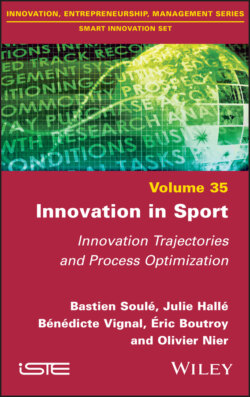Читать книгу Innovation in Sport - Bastien Soule - Страница 20
1.6. Conclusion
ОглавлениеAt the end of this brief overview, it should be pointed out that there is no a priori more or less true (or false) reading of innovation processes, nor is there a neutral reading; the statements produced from these different theoretical perspectives constitute, as it were, “pieces of the truth”, each with its own grey areas. There are therefore different ways of understanding sports innovations, which are sometimes difficult to reconcile. Diffusionism, inspired by Rogers, focuses on the properties of an innovation in order to highlight its relative qualities (within a given context) and thus explain its spread. For some, the context (organizational, historical, social, cultural) will appear to be more decisive in understanding the success or failure of inventions. For others, it is the users (lead users, users involved in the innovation process) who are the main drivers of value creation. Finally, a current of socio-technical inspiration will reverse the gaze to address the dynamic and reciprocal co-construction of the innovation and the environment that will judge it... These different perspectives are not mutually exclusive but correspond to distinct questions that focus on different scales or periods of the innovation.
At a time when innovation processes are becoming more complex (if only because of the acceleration of the circulation of information and the growing influence of users, or even of communities of use), and when innovations become increasingly intertwined (as in the case of the development of service innovations in conjunction with product innovations), it seems desirable that research in social and management sciences applied to sport should be based more voluntarily and systematically on these different theoretical achievements. The specificity of the sociology of innovation lies, on the one hand, in its empirical anchoring, which gives pride of place to field studies, and, on the other hand, in its descriptive dimension, which is particularly relevant to account for emerging and unstable processes.
With regard to the surveys and research mentioned, it is important to remember that the innovation process often appears to be less linear and centralized than common sense would suggest. A reticular phenomenon, subject to continuity and sometimes swirling, it eludes categories that are too closed, as well as attempts to identify the key stages of any innovative process (identification of a need, prototyping, testing, successive lifting of technical constraints, marketing, etc.), tending toward a form of idealization of real innovation trajectories (Gaglio 2011). In principle, while some approaches value one actor or another (be it an entrepreneur, lead user, open enterprise, socio-technical network, etc.) as a source and catalyst of innovation, it is probably less the characteristics of a hypothetical typical innovator that should be tracked down than, more modestly, the key competences that are recurrently implemented in the innovative processes (Gaglio 2011).
1 1 “Production educates consumers, as it were, and creates new needs, so that initiative is on its side” (Schumpeter 1935, p. 94).
2 2 Faced with an unfulfilled need, some of these user-inventors nevertheless aspire to take advantage of their inventive capacity, and create companies (Shah and Tripsas 2016) or even file patents for this purpose. But ultimately, a very small percentage of such patented products reach the market phase (Dulakakhoria and Jana 2013), and the eventual transition to commercialization often involves the use of traditional manufacturers.
3 3 It is surprising that this original work in sports management does not rely on the actor-network theories that we will see in section 1.3.
